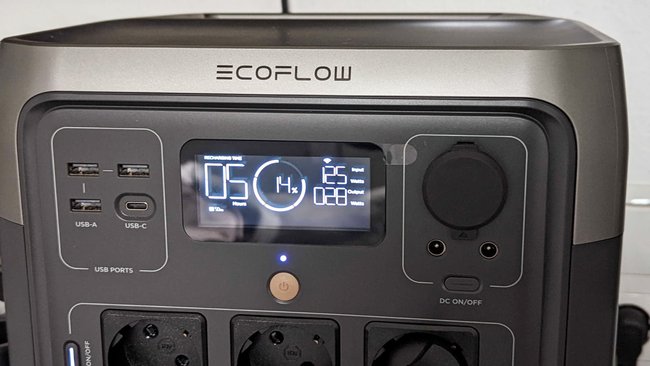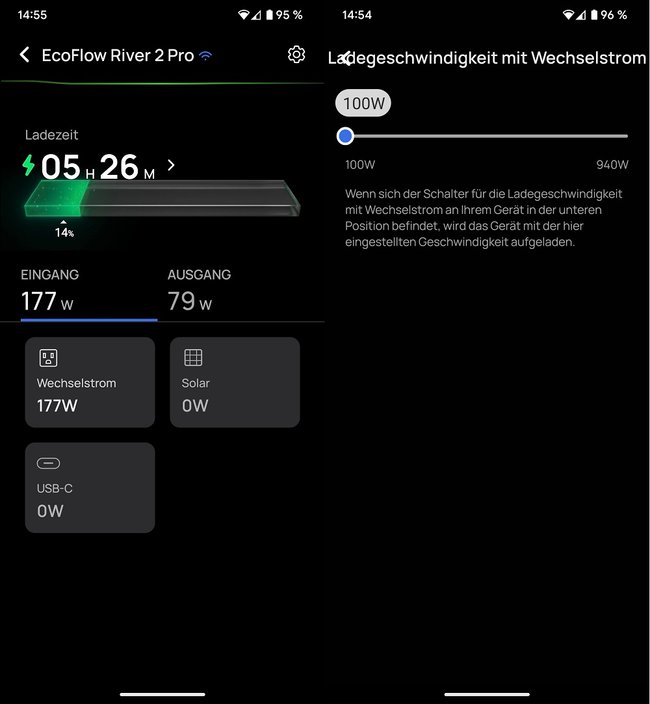This is already possible
A balcony power plant actually works in a closed circuit and only works in a certain way: Produced electricity is used directly and the surplus is given away to the grid operator. You can avoid this with a solar generator. I tried this.
Contents
Equip a balcony power station with a battery
A plug-in mini solar system is actually not intended to store the electricity produced. In the classic sense, this cannot be changed at all, because this is the only way to get approval from the network operator. Yet there is a detour, how you don’t give away the too much electricity produced. To do this, you can use a battery known as a solar generator or power station. The balcony power plant remains untouched and does its work as usual. With the power station, you only ensure that you absorb the excess electricity produced and don’t give it away.
A solar generator can do that too can be charged in the classic way via a socket. The power supply gets the energy easily from any socket in the household, which is supplied with energy via the balcony power plant. Ideally, your 600-watt mini solar system will produce a lot of energy that you don’t use anywhere else. Instead of feeding them in and giving them away, you can simply pick them up with the power station. The solar generator is then just an additional consumer that you feed with solar energy instead of giving it to the electricity provider.
A self-experiment
I tried this with the EcoFlow River 2 Pro. Through the app and the possibility that exists there to set the loading speed manually, it’s actually quite simple. I simply plugged the power strip, which is actually in the wall socket, into the solar generator. I plugged the solar generator back into the socket. The PC, monitor, light, speaker, charger and everything else runs through the solar generator.
If my balcony power plant produces more energy than I consume in the entire household, I can store excess energy in the battery of the solar generator, by activating the solar generator via a WiFi socket. Simply plugging it into the wall doesn’t work, because it always charges automatically. That’s why a WLAN socket is needed in between. Via my energy app from the inverter I can see how much electricity my balcony power plant is producing and I can use the EcoFlow app to set the speed at which the battery should be charged via the socket.
That is all quite cumbersome and it is unavoidable that I sometimes also draw electricity from the grid. But that’s not a problem, because I don’t use it, but store it in the battery and can use the energy again. In this way, I could basically make my office self-sufficient with all consumers.
This not only works on a small scale with a balcony power plant, but also with a solar system on the roof if you don’t have a battery. Instead of selling the energy cheaply, you could store at least part of it in a solar generator and use it.
All information about the balcony power plant can be found in the video:
Is it even worth it?
My balcony power plant produces on sunny days up to 3 kWh, which I don’t use completely, although I work in the home office and my PC runs all day. The fridge and other consumers don’t use all of the energy either, and the dishwasher or washing machine only run once a week. So I give away energy regularly. I could save them temporarily without much effort and at least use them up in the office.
According to my records I have gave away 141 kWh from my balcony power plant in one year. That is at least 42 euros at an electricity price of 30 cents. As electricity becomes more and more expensive, this should become more and more valuable over time. I wouldn’t buy a solar generator specifically for this. But if you want to have one anyway, then that would be an additional use case. But I would choose a model with at least 1 kWh, more likely even 2 kWh.
Why all the effort?
For me, this whole possibility of temporarily storing the electricity from the balcony power plant is so exciting because many people have bought a solar generator that they probably only want to use in an emergency, i.e. if there is a blackout. Especially in combination with a balcony power plant or a solar module, there are many more options for producing electricity without having to buy it.
The solution described above does require some creativity and work, but it should be very easy to control, especially in summer, when the solar system produces a lot of electricity. After all, I’ve already mined Bitcoin with the superfluous stream and that worked. So it is possible if the solar generator has an app and the charging speed can be controlled.
I would still wish that there would be a system at some point in which the balcony power plant and a solar generator could communicate directly and everything would run automatically. But that is not feasible in Germany with the current legal situation for balcony power plants. My solution described here is currently the best way.



